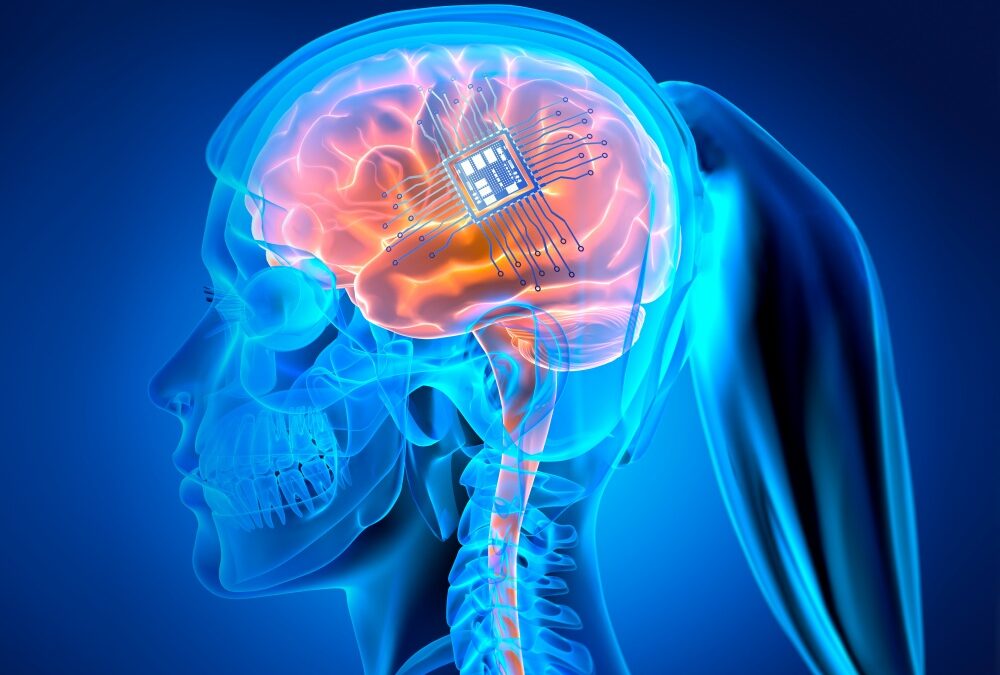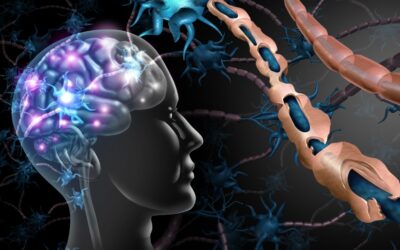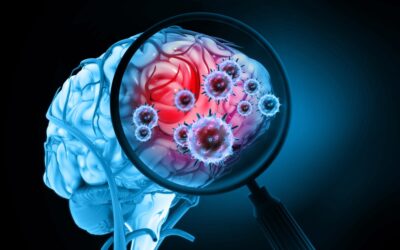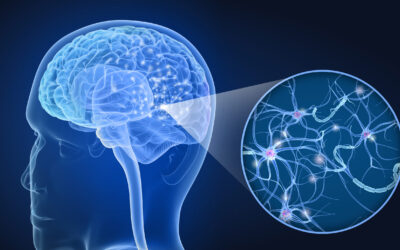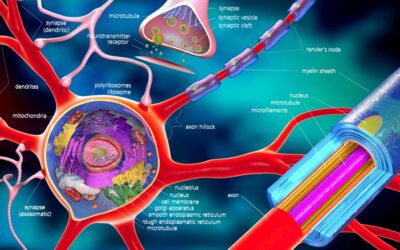Neuroplasticity, Neurogenesis, and synaptic plasticity and Stroke Recovery
The neural processes involved in functional recovery after a stroke, is reliant upon two mechanisms, neurogenesis and neuroplasticity.
Neurogenesis is the process of creating new neurons. This of course would be beneficial in the case of a stroke where neurons have been damaged/destroyed.
Neuroplasticity is the brains ability to adapt in response to new experiences. This is something that occurs throughout life.
Synaptic plasticity is a form of neuroplasticity that involves a change in the electrical signal between two neurons. The “synapse” is the space between two neurons and “plasticity” is the capacity for something to be moldable/changed. Hence, synaptic plasticity. The way that an electrical signal is transmitted is via chemicals called neurotransmitters.
Simplified, a neurotransmitter can either turn an adjoining neuron on (excitatory neurotransmitter) or off (inhibitory neurotransmitter). Synaptic plasticity involves several mechanisms whereby there is a change in the concentration of a neurotransmitters and/or a neurons ability to respond. When it comes to memory and/or learning a motor skill that we want to be able to repeat in the future, the brain rely’s on a mechanism called long-term potentiation (LTP).
LTP is a long lasting strengthening of a signal between to neurons that persists in response to a specific activity. If a neuron is repeatedly stimulated (repetitive practice of an activity), it will build more neurotransmitter receptors, and increase the amount of the neurotransmitter. Together, these two process will increase signal strength in that specific neural network.
What is BDNF and how does it work?
A growing body of evidence indicates that Brain-derived neurotrophic factor (BDNF) is a key player in multiple nerve communication processes. Simplified, BDNF is a molecule that triggers a cascade of actions on a neuron including neurogenesis (neuron growth), and synaptic plasticity (signal strength).
BDNF contributes to neurogenesis (growth of new neurons)
The current understanding is that BDNF binds to the TrKB receptor, triggering the neuron to grow more dendrites. Dendrites are the arms of a neuron that accept the neurotransmitters. More dendrites mean a stronger signal can be received from an adjoining neuron. Of note, current literature suggests this BDNF effect on a neuron is limited to specific brain areas. One area that has been identified is the hippocampus (brain area involved in memory and learning).
BDNF contributes to synaptic plasticity
Again, just to review, synaptic plasticity is the amount of signal strength between two neurons involving the release of a neurotransmitter to send the message. It is believed that BDNF regulates neurotransmitter release. In particular nitric oxide (NO), glutamate (excitatory neurotransmitter) and GABA (inhibitory neurotransmitter); and their receptors. In other words, BDNF might be one key that unlocks the door that allows the neurotransmitter to leave one neuron and the same key that opens the door of an adjoining neuron to allow that neurotransmitter to enter.
It is also believed that BDNF influences long-term potentiation (longer-lasting effects of signal strength). This process might be the result of BDNF influence on gene expression and/or protein synthesis.
Does BDNF Influence Stroke Recovery?
There is a growing body of evidence that suggests that BDNF can act as a repair agent after a stroke. However, the amount of BDNF (after a stroke) does not seem to be enough to overcome the cascade of events that are triggered by ischemia (lack of oxygen in the neuron). Therefore, pharmacologic and rehabilitation strategies have been identified as necessary interventions to increase the amount the BDNF expression. And in this area, there lies some potential opportunities to increase BDNF expression and functional recovery after a stroke.
Pharmacologic Interventions
The majority of the evidence suggests that BDNF can’t cross the blood-brain barrier (the filter that protects the brain). With that said, there does not currently seem to be a mechanism to get BDNF into the brain. Of note, there are ongoing studies that are investigating alternative means. One such study is working on creating a smaller molecule that can cross the blood-brain barrier. Other studies are investigating the potential of injecting a BDNF isoform directly into the damaged area of the brain. However, these studies have not yet proven to be effective.
Aerobic Exercise Increases BDNF expression
Multiple studies have shown a positive correlation between aerobic exercise, cognition, memory and BDNF expression in healthy people. Futhermore, there is considerable literature that increased BDNF expression improves learning, memory, and motor function in many disease processes, including stroke.
How much exercise is necessary to increase BDNF?
The consensus in the literature suggests 30 min of moderate intensity (heart rate goes up but you can still maintain a conversation), 4 days/week.
Aerobic exercise timing
There does appear to be an optimal time at which to perform your aerobic exercise. It is well documented that BDNF levels increase immediately following aerobic exercise. With that said, there are some who theorize that performing aerobic training prior to a cognitive/learning activity might prime the system to optimize synaptic plasticity.
Other articles you might like:
Protein: Essential to brain health and repair
Protein, often referred to as the “building blocks of life” is arguably the most critical macronutrient for brain health and repair and disease prevention as we age. One of three macronutrients found in food the body is primarily composed of protein (second only to...
Simple versus Complex Carbohydrates
Carbohydrates are one of the three macronutrients that make up the foundation of our diet, along with protein and fat. They are found in a wide variety of foods, from fruits and vegetables to bread and pasta. Despite their importance in our diet, carbohydrates have...
Brain Health and Recovery: Food IS Medicine
Brain Health and Recovery: Food IS Medicine Food can be an excellent tool to enhance brain health and recovery. However, if you thought the brain was a complicated system to understand, the data on nutrition is far more complicated. So, spoiler, there is no “perfect...
Brain Derived Neurotrophic Factor (BDNF) and Brain Health
Brain-derived neurotrophic factor (BDNF) is a protein that aids in cell function and promotes the growth of new nerve cells (neurogenesis). Studies have shown that BDNF plays a critical role in neuroplasticity (the brains ability to build new nerve connections) and...
Neuroinflammation: Implications in Brain Health and Disease
Neuroinflammation is a broad term that is characterized by an immune response in the central nervous system (CNS) - the brain and spinal cord. This abnormal immune response is initiated by cues including infection, bacteria, brain injury, toxins and autoimmunity. ...
Mitochondrial Dysfunction in Multiple Sclerosis
Multiple sclerosis, also known as encephalomyelitis disseminata is a neurodegenerative disease characterized by damage to the white matter in the brain and spinal cord (central nervous system. The mitochondria are implicated in MS disease progression. With that said,...
Mitochondria: Key to Brain Health
Within every cell of the human body is a pool of structures called mitochondria, often referred to as the “powerhouse” of the cell (generating 90% of the body’s energy). In recent years mitochondria have been credited for brain health and optimal performance. On the...
Exercises to Lift a Stiff/Heavy Leg
https://youtu.be/4Op-qbT4yjo Following a neurologic injury, some people experience a leg that feels stiff, heavy, or both. This can make walking difficult. In this video, you will learn the best exercise routine to relearn how to lift the leg more efficiently and...
Dysphagia after stroke
Dysphagia After A Stroke Over 50% of patients are affected by dysphagia after stroke. It is typically characterized by the inability to swallow liquids or foods and can lead to choking. Patients usually tend to recover from post-stroke dysphagia within the first week...
How Old Is Too Old?
You are never too old to set another goal or to dream a new dream. -C.S. Lewis How old is “too old”? I am often curious about this question. Especially when I hear statements like “I am too old to change”, “this is the way I have always been”, “maybe when I was...

